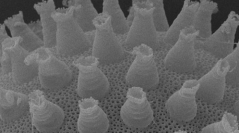

 European Journal of Taxonomy
2019 (573) - Pages 1-38
European Journal of Taxonomy
2019 (573) - Pages 1-38In this paper we describe two new tardigrade species belonging to the Macrobiotus hufelandi complex: Macrobiotus noongaris sp. nov. from Perth, Australia, and Macrobiotus kamilae sp. nov. from Mussoorie, India. Live specimens extracted from moss samples were used to establish laboratory cultures in order to obtain additional animals and eggs needed for their integrative descriptions. These descriptions are based on traditional morphological and morphometric data collected using both light and scanning electron microscopy, which, at the same time, were associated with DNA sequences of four genetic markers, three nuclear (18S rRNA, 28S rRNA and ITS-2) and one mitochondrial (COI). The use of DNA sequences allowed for a more accurate verification of the taxonomic status of M. noongaris sp. nov. and M. kamilae sp. nov as independent species of the hufelandi group. Although they both exhibit typical inverted goblet-shaped processes, they represent a recently discovered clade, which was thought to group species with modified morphology of egg processes. Thus, this contribution expands the definition of the mentioned clade and constitutes another link that will be helpful for future studies on the evolution of the M. hufelandi complex.
Egg ornamentation, Indian Himalayas, species complex, taxonomy, Western Australia